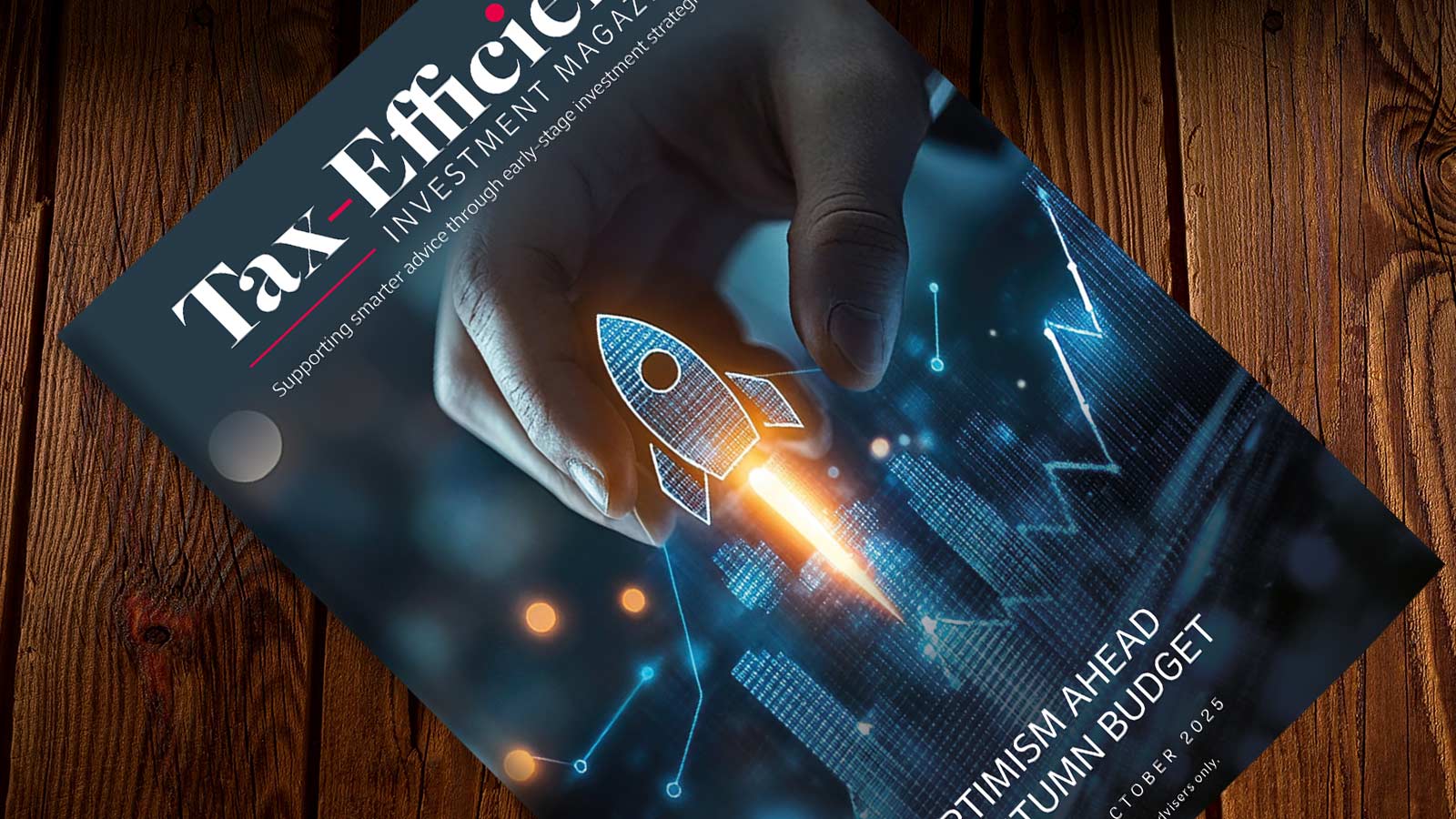In the next instalment in our series of exclusive interviews with industry experts, Nic Pillow, Senior Ventures Manager at Blackfinch Ventures, provides his insight on the biggest growth opportunities and most common risks for investors, as well as discussing his company’s approach to investing.
1.) What tax-efficient schemes does your company work with, and how do you offer a unique/compelling approach for advisers?
“Blackfinch offers both an Enterprise Investment Scheme and Venture Capital Trust, managed by the Blackfinch Ventures team. Blackfinch has a unique style of managing capital into startup and scaling businesses. The team are predominantly ex-founders, rather than coming from investment backgrounds. As a result, they have first-hand experience of the challenges many founders face. This enables them to use their high emotional intelligence and empathy to better identify businesses in the first place, as well as work with them over time to resolve situations swiftly and with strong outcomes.
“Their technical backgrounds also enable the team to become an integral part of the structure of the underlying companies that they invest in. Alongside taking an observer seat on the board to be instrumental in the company decision-making, they are also able to get hands-on with the technology and help resolve problems with product development. This deep insight to the investee business and its future potential makes for a very different portfolio than traditional financial investment.”
2.) How active are you in providing education to advisers on the types of clients that are suitable for these types of investments, as well as any changes in regulation or nuances in the existing rules?’
“Helping advisers to understand and communicate EIS and VCT investments is a key part of our relationship strategy with the adviser community. Included within the materials we have produced are a wide range of client planning scenarios and insight articles which break down the types of clients who may benefit from these investments, including worked tax examples to make it feel tangible and relatable.
“Having listened to advisers, we also recognise that the Consumer Duty brought additional requirements to prove that clients understand with confidence where their money is going to be invested. To help alleviate the complexity of both EIS and VCT, we produced client-friendly animations that walk through the whole proposition. They include what it is, how it works, what’s included in a typical portfolio and what to expect from their portfolio.
“We also produce interviews with underlying companies, to share their origin stories and what the future holds for them, so investors understand where their money is being put to use. Alongside this we invest in producing films of our investment teams explaining the end-to-end investment process in detail.”
3.) Where and in which types of companies are you seeing the biggest growth opportunities?
“The Blackfinch EIS and VCT investments both have a technology mandate – this means we are investing into technology enabled startup and scaling businesses on the cusp of growth. But those firms can sit across multiple sectors, in fact we currently have investee businesses within 21 different verticals.
“IFA Magazine previously reported the Wealth Club statistics that show we are the VCT with the greatest exposure to high-growth companies, something we’re incredibly proud of. Across our portfolio we’re seeing the strongest growth in those firms that are able to adapt to the current economic climate. It’s not about having to reinvent the business, it’s about being able to see the challenges ahead and create genuine value for clients at a time when they are being more selective about parting with their money.
“We’re also seeing stronger growth for investors in sectors where it’s less crowded. When margins are being compressed by inflation, it’s easier to build pricing elasticity in markets where there are fewer competitors vying for the same customer.”
4.) What do you see as the biggest risks for investors?
“The greatest risk to investors at this time is not considering EIS or VCT just because of personal preconceptions or misbeliefs. Yes, they are a higher risk product than mainstream investments such as ISAs, and should only be included as part of a diversified portfolio. But they also offer exciting opportunities for growth and diversification by being so different.
“We don’t want investors to let the complexity of the product be something that puts them off considering it, as they risk missing out on a valuable addition to their wider product holdings. We have recently created explainer videos to help bust some of the myths about EIS and VCT and encourage a client-friendly consumer duty approach to these investments. It’s important for clients to recognise that it’s not all or nothing with high-risk investments such as these.
“It’s about taking a portion of their portfolio and reallocating it towards the alternatives that gives them exposure to asset classes that behave so differently to the more traditional route.”
5.) Should advisers be worried about a lack of diversification, and why?
“We don’t see diversification as a barrier, for us it’s an opportunity. As I mentioned earlier, we are invested in over 20 different vertical sectors with our EIS and VCT portfolio companies. But diversification also comes in many other forms – our companies are spread across the whole of the UK so lack the commonly seen south-east bias. We also talk to companies at different stages, which means we can offer exposure to companies with different amounts of track record under their belt and different growth journeys ahead of them.
“Recently we also shared research with readers of IFA magazine and the wider adviser audience, showing that Venture investments hold low correlation to more conventional asset classes. The research demonstrated that by adding an allocation of ventures into a portfolio, it improved the diversification and shifted closer to the efficient frontier, creating improved risk-adjusted returns for the investor – and in addition the investor also qualifies for tax rebates, which really is a win-win. So it’s important that advisers don’t only consider tax-efficient investments for clients who specifically list an objective of tax mitigation. They have a role to play for their wider client base who are seeking returns.
“It’s important to get to know the venture capital management team well and understand their approach to diversification before going further with these products. We regularly meet with advisers to share our approach, because we know it’s important to encourage a transparent conversation. As a result, advisers find it easy to understand how our EIS and VCT sit alongside a client’s other investments, and the role that their diversification can play.”
About Nic Pillow
Nic is an entrepreneur and leader in B2B technology. He co-founded his own startup, Rhizome Live, a Software-as-a-Service business in the Education Tech sector. He raised £400k and gained access to a top accelerator.
Before that, he led a global team at Nokia which exercised portfolio control over 15 of their software products that grew in annual revenue from £50 to £250 million.
Previously, Nic held roles including Product Manager at Logica and Solution Architect at Portal Software. Nic holds a first-class degree in Engineering & Computing from the University of Oxford and a Ph.D. in Computer Vision from the Robotics Research Group at the University of Oxford.









![[UNS] tax](https://ifamagazine.com/wp-content/uploads/wordpress-popular-posts/788955-featured-300x200.webp)
![[uns] house of commons, parliament](https://ifamagazine.com/wp-content/uploads/wordpress-popular-posts/788873-featured-300x200.webp)




